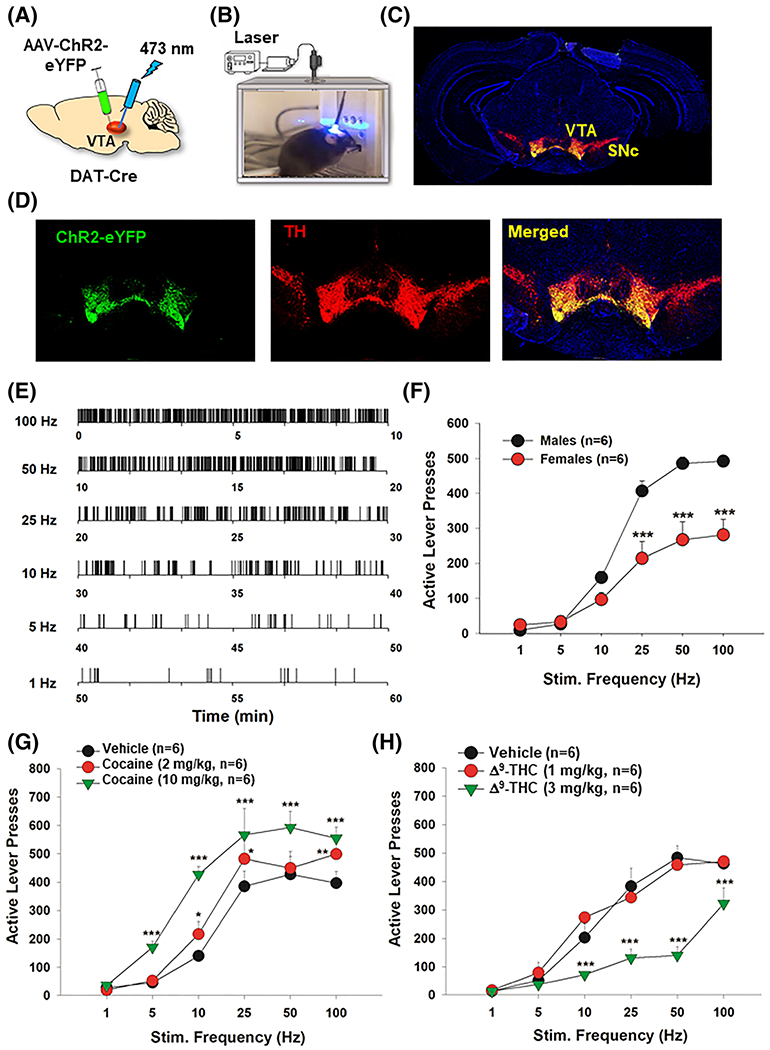FIGURE 1.

Optogenetic intracranial self-stimulation (oICSS) experiment and the effects of cocaine and Δ9-tetrahydrocannabinol (Δ9-THC) on oICSS in DAT-Cre mice. A, A schematic diagram of the AAV-ChR2-eYFP microinjection and intracranial optical fiber implantation within the ventral tegmental area (VTA) in dopamine (DA) transporter (DAT)-Cre mice. B, Image of the setup of the oICSS experiment. C, Immunostaining of whole brain slice indicating the placement of the AAV-ChR2-EYFP expression in the VTA. D, 20× magnification of the VTA showing ChR2-EYFP expression in VTA TH-positive DA neurons. E, Representative lever responding to different frequencies of laser stimulation in a single session from a single mouse. F, Graph of the lever responding over different frequencies of laser stimulation illustrating the stimulation–response curve in male and female mice. G, Cocaine (10 mg/kg, intraperitoneal [ip]) dose-dependently shifted the oICSS curve upward when compared with vehicle control. H, Δ9-THC dose-dependently shifted the oICSS curve downward. *p < 0.05, **p < 0.01, ***p < 0.001 compared with the vehicle control group
